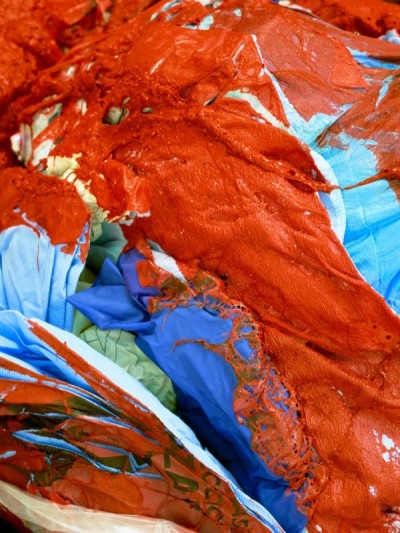
SINGLE USE ONLY. "In Single Use Only, enlarged, detailed views of autoclaved medical waste flank a single bench cast from recycled waste and cement. Large-scale color photographs accentuate a wealth of surface textures and colors, transforming autoclaved medical waste into full-bodied, graceful abstractions. Predominately red and pink compositions reference the very organs, skin, cellular structures, arteries, and heart valves that have been potentially touched, cured, or protected by the medical products before they were melted.
Single Use Only is a new chapter in my examination of the body and mortality in medical contexts through an extended investigation of the life of hospital waste. To ensure tools and other hazardous materials such as IV bags, latex gloves, syringes, or biohazard bags are sterilized before transfer to a landfill or recycling plant, they must be processed by facilities called autoclaves. Once sterilized syringes, lancets, IV bags, test tubes, gauze, and gloves— items often imprinted with the text labeled as “Single Use Only”—are all able to be recycled. This sterilized medical waste can be burned as energy to power homes and hospitals, and the ash from burning can be collected and used as an additive for cement and other construction material.
I incinerated a sampling of shredded, autoclaved medical waste and mixed the resulting ashes to create the cement portion of an otherwise seemingly ordinary gallery viewing bench. Sitting on the piece of furniture becomes an act of empathy; it is an intimate connection to the material that touched illness, crime, or death—and is an atypical experience in an American culture that tends to deny death and decay. As a whole, the works serve as a visual and material parallel to the act of organ transplants or the act of recycling parts of the body—a delineation of the new energy that comes from sickness or death." ©Sarah Sudhoff
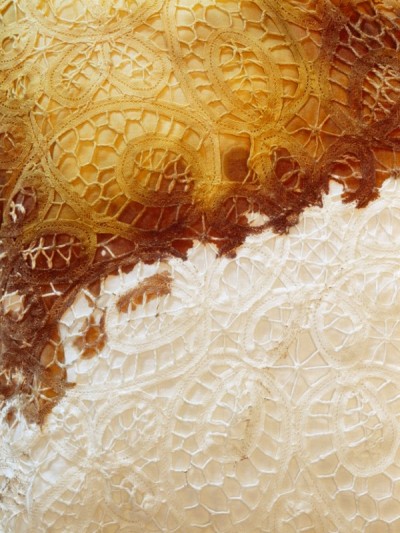
AT HOUR DEATH. "Death, like birth, is part of a process. However, the processes of death are often shielded from view. Today in Western society most families leave to a complete stranger the responsibility of preparing a loved one’s body for its final resting place. Traditional mourning practices, which allowed for the creation of Victorian hair jewelry or other memento mori items, have fallen out of fashion. Now the stain of death is quickly removed and the scene is cleaned and normalized. As Phillipe Aries writes, “Society no longer observes a pause; the disappearance of an individual no longer affects its continuity”. At the age of seventeen, I lost a friend to suicide. While visiting his home the day after the event, I witnessed a clean-up crew steam cleaning the carpet in his bedroom. All physical traces of the past 24 hours had vanished. These large-scale color photographs capture and fully illuminate swatches of bedding, carpet and upholstery marked with the signs of the passing of human life. The fabrics which are first removed by a trauma scene clean up crew, are relocated to a warehouse before being incinerated. I tack each swatch to the wall and use the crew’s floodlights to illuminate the scene. The images are my attempt to slow the moments before and after death into a single frame, to allow what is generally invisible to become visible, and to engage with a process from which we have become disconnected." ©Sarah Sudhoff
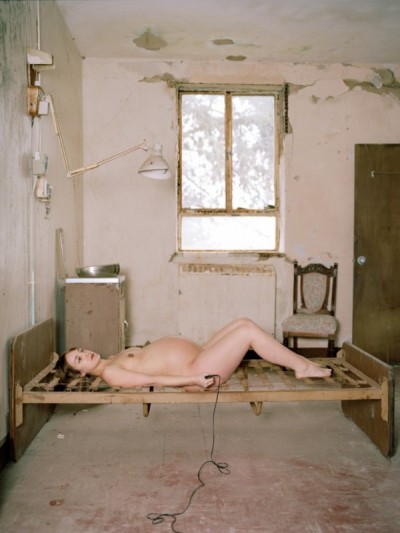
MATERNITY WARD. "Medical spaces have long held a fascination for me as both an observer and as a participant. I’m intrigued by the relationships we form with specific medical environments and how our expectations about the treatment of our own bodies is shaped by our surroundings.
Maternity Ward is an in progress series exploring my role as a new mother and references my continued dependence on medical intervention. Motherhood was not something I truly expected to experience. In 2004 a portion of my cervix was removed to treat the first stages of cervical cancer as a result of HPV. I feared I wouldn’t be able to conceive let alone carry a child to term. In the early months of my pregnancy my cervix was checked often which also led to the discovery of a placenta previa. Both medical conditions were monitored closely and although not immediately life threatening caused emotional anxiety throughout most of my pregnancy.
In much the same way I staged prior self portraits taken in medical environments, I worked very intuitively in the abandoned Yorktown Hospital. Limited by lack of air conditioning or heat and inconsistent access to power, I let the space and light dictate where and when I would photograph. I was drawn to three specific spaces–the nursery, labor and delivery room and the kitchen. Using only what was on hand I began to weave a small narrative through the space each time I returned–the images became not only a record of my pregnancy and my physical changes but also revealed my changing emotions towards my son and the many unknowns ahead of us." ©Sarah Sudhoff
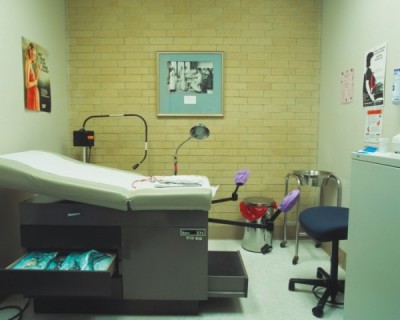
REPOSITORY "I examine the body within a medical context by exploring through large-scale photographs four main themes: pathological waste; containment of the body and its parts; fragmentation and violence against the body; a subject’s relationship to a specific environment. Following my surgery in 2004 for cervical cancer, I began to photograph and perform in hospitals, morgues, medical museums and my doctors’ offices. The photographs and videos focus attention on the physical and emotional traces cancer and surgery can leave on the body while challenging the prescribed treatment for recovery and role of the patient. Through self-portraiture and self-performance, private rituals are revealed to the public only through documentation. Personal experiences will illness and mortality are intertwined. The same character’s presence in many of the works allows for an introspective look at these, in some cases unfamiliar worlds in comparison to one another. The repetition of spaces, procedures and a central character highlights and reshapes our thoughts on medical environments, the treatment of our bodies in these spaces, what role we have at protecting our bodies and the lengths we will go to achieve a sense of health. While the journey stems from a personal bout with cancer, I hope to resonate with each viewer as they reflect on the work." ©Sarah Sudhoff
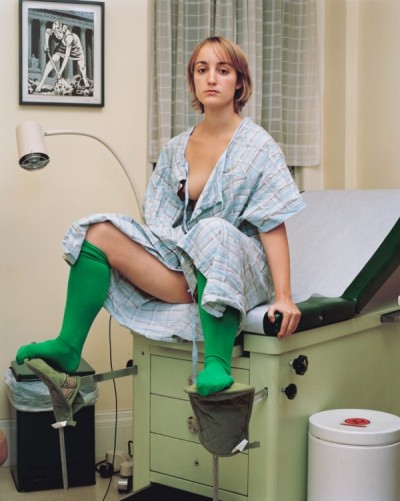
REPOSITORY ©Sarah Sudhoff


